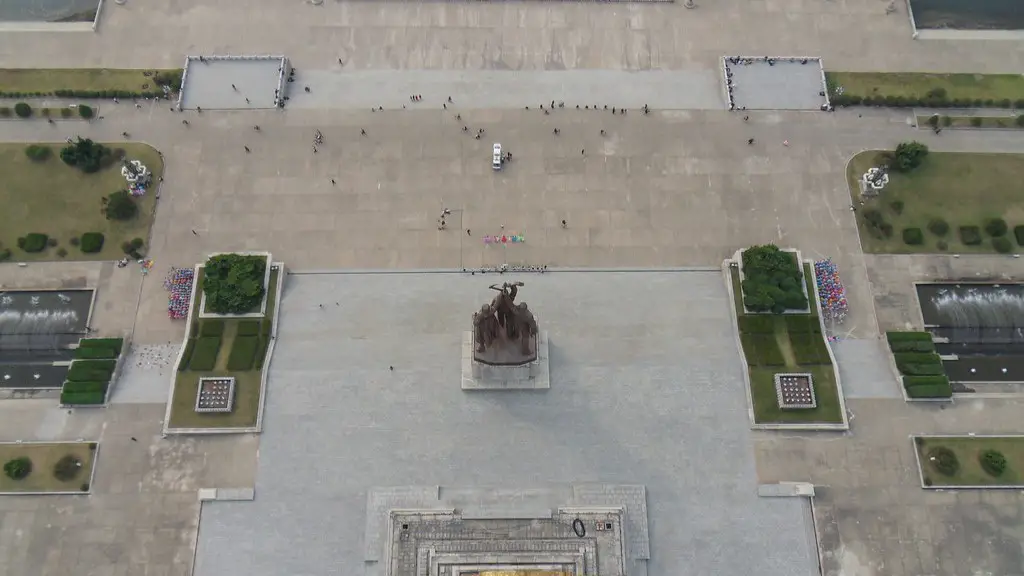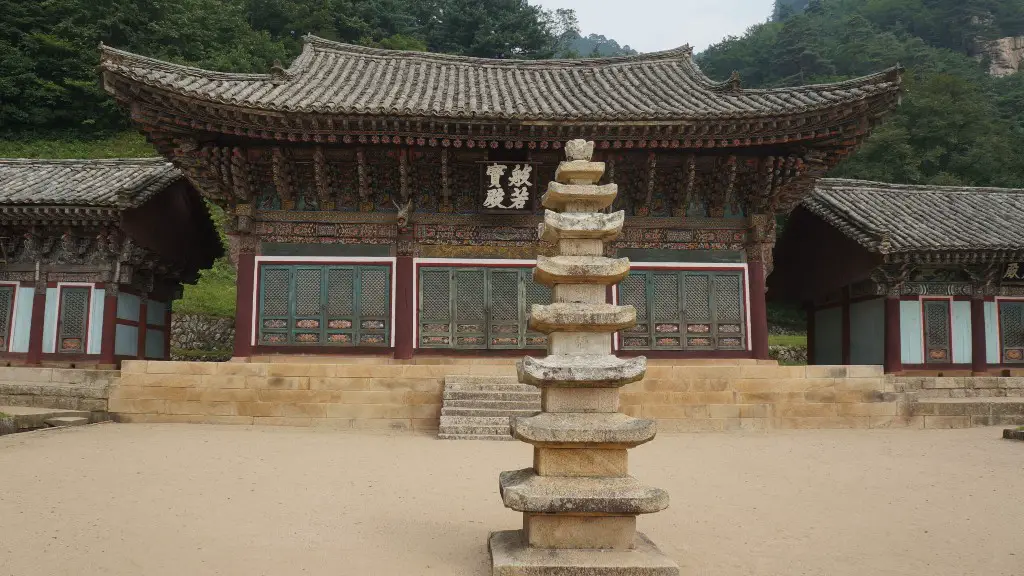Why Are South And North Korea Divided?
Since the end of the Korean War in 1953, the Korean peninsula has been divided into two countries: North Korea and South Korea. Although the armistice agreement technically ended the war, no peace treaty has ever been signed, meaning that the two countries are still technically at war but are in a de facto cease-fire. Over the years since the war, attitudes on both sides of the divide have hardened, resulting in one of the most intractable conflicts in the world.
Political Differences
At the heart of the divide between the North and South is a fundamental divergence in the two countries’ political ideology. North Korea’s strictly authoritarian government, ruled by the “one-man rule” of the Kim family dynasty, is built upon a highly centralized system of government and has been ruled for over 70 years by the same family. South Korea was previously ruled through a heavily censored military dictatorship but shifted to a democratically elected government in the mid-1980s. Fundamental differences in political ideologies have meant that it is difficult for the two sides to reach a compromise.
Economic Contrasts
The economic differences between the two nations is a further barrier to unification. North Korea’s economy is one of the least developed in the world, characterized by isolationism, international sanctions and limited natural resources. In comparison, South Korea’s economy is one of the largest in the world, characterized by rapid growth and integration with the global economy. As a result, South Koreans generally have access to higher standards of living than North Koreans.
In spite of their differences, North and South Korea share a unique cultural heritage. Although the cultures have subtly diverged over time, they are both deeply rooted in Confucianism and share a unique language, art and cuisine. There is a deep sense of shared history and identity in both countries, which is an obstacle to achieving lasting peace.
Regional Challenges
The Korean peninsula’s strategic geographical location poses additional challenges for unification. The region is home to powerful countries such as China, Japan and the United States, which have conflicting interests in the area. North Korea’s relationship with these countries can be unpredictable, making it difficult to achieve stability in the region.
Military Forces
Perhaps the greatest obstacle to peace on the peninsula is the presence of large-scale military forces on both sides. North Korea has one of the largest militaries in the world, with an estimated 1.2 million active personnel, and is widely considered to be one of the most heavily fortified countries in the world. South Korea also has one of the largest military forces, with 600,000 active personnel. Both militaries are well-equipped and have high levels of training and readiness.
Ongoing Negotiations
However, despite the challenges, there are ongoing efforts to broker peace between North and South Korea through negotiations. In 2018, the two countries held a historic summit between their respective leaders, during which they agreed to “cease all hostile acts.” While this summit was a step in the right direction, a number of key issues remain unresolved, and there is still no end in sight to the conflict.
Impact of International Sanctions
Efforts to bring about peace and unity in the Korean peninsula are further impeded by the international sanctions imposed on North Korea. The United Nations Security Council has imposed a variety of economic and diplomatic sanctions on the country since 2006, when North Korea conducted its first nuclear weapons test. These sanctions, while intended to pressure the country’s leadership into abandoning its nuclear program, have had a dramatic impact on the ordinary North Korean citizens, resulting in widespread poverty and suffering.
The Role Of China
China, North Korea’s closest ally, has also had a significant role to play in the conflict. China has traditionally provided economic and diplomatic support to North Korea, and its influence on the regime is a major factor in the maintenance of the division on the peninsula. While China has historically sought to maintain an atmosphere of neutrality, its relationship with North Korea is seen as a major obstacle to the possibility of reunification.
Role of United States
The United States also has a key role to play in the division between North and South Korea. The US has maintained a military presence in South Korea since the end of the Korean War and provides the country with extensive economic and military aid. The US’s strong stance against North Korea has meant that the two countries have often been at odds, which has had an effect on relations between the North and South.
Growing Support For Unification
Despite the numerous obstacles to peace, surveys have suggested that there is growing public support in both South and North Korea for unification. There has been a marked increase in the number of cultural and sporting exchanges between the two countries, as well as in levels of public opinion in favour of reunification. Still, the challenge of overcoming the deep political and economic divisions between North and South Korea remain immense.


